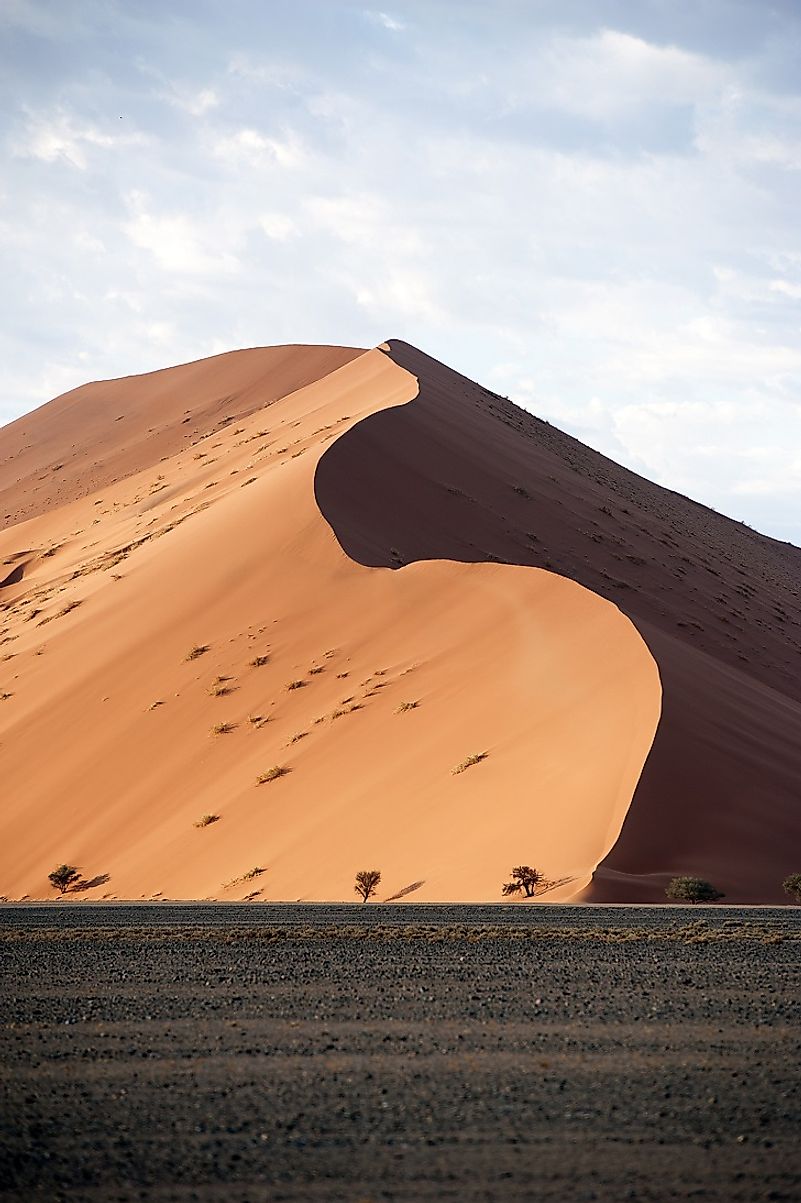Wind Cathedral, Namibia: Unique Places In The World

5. Description
The Wind Cathedral is a series of desert sand formations. These sand dunes are found mainly in the Sossusvlei region of the Namib Desert. It is in the southwestern portion of the country of Namibia. The high sand dune formations in this area are what makes this part of the Namib desert an attractive destination for tourists. The Namib Desert has more or less consistent weather in the daytime at around 45°C (113°F), so any time of the year is an equally good time to visit. However, at Windhoek, a visit to Namibia is best from September to October. This is when local animals gravitate towards their watering holes, and are thus more visible to tourists.
4. Tourism
Tourist accommodations are now available inside the Namib-Naukluft National Park. Other accommodations are between Solitaire and Sesriem, which also lies nearby. Sossusvlei is accessible from Sesriem by way of a 60-kilometer tarmac road. Tourists have several options to get to the Wind Cathedral in Sossusvlei, either by 4-Wheel-Drive land excursions, or by small planes in scenic flights over the area from Windhoek. There's also the morning hot air balloon rides which depart from \Sesriem. The average tourist can most easily get to Sossusvlei from the town of Luderitz in southern Namibia. The town of Walvis Bay is another starting point from which to embark on seeing the enormous sand dunes in the coastal area of the Namib Desert.
3. Uniqueness
The word Namib means, “vast place” in the Nama language, with Sossusvlei meaning "dead-end marsh”. The Wind Cathedral area in southern Namib desert has the highest, and most formidable looking, sand dunes therein, and these range from pink to intense orange in color. Some of these colorful sand dunes have heights reaching more than 300 meters. The sand dunes also have varying forms and patterns, creating a look akin to cathedrals with their towering roofs in the sky. The Red Desert area also exhibits similar dune formations with the Yellow Desert, both of which are within the Namib Desert as well. The series of petrified sand dunes there make for another destination in the Sossusvlei region of the park.
2. Habitat
The Namib desert is a natural resource-rich area. Some areas of the desert are mined for their deposits of diamonds, salt, and tungsten. Over the border, the South African Defense Force uses it for training as well. The explorer brand of tourist can find the endemic Welwitschia plant, which is endemic to the Namib Desert. The desert is a harsh environment even for animals, but animals of many different species still manage to thrive here. The obvious local fauna are the desert elephants, antelopes, ostriches, Oryxes, meerkats, and jackals. The less obvious are its kinds of smaller animal life, such as beetles and lizards. African lions were also part of the ecosystem in the Namib desert as recent as the 1930s, but most of this "Vulnerable" species have since just moved on.
1. Threats
The Namib desert is an arid and harsh place for tourists to lose their way in. It also has some very venomous native snakes, such as the sidewinder. Scorpions and the larger desert animals can also pose threats to wayward tourists as well. On the other hand, tourist traffic in the desert can be a threat to the environment with the environmental impacts that they bring to the desert, though many of the efforts in the conservation projects in the Namib Desert has taken a turn for the better. In recent years, the African desert lion has made a comeback under the Namib Desert Lion Conservation Project, with another prospectively successful, ongoing projectin the area being the Namibia Desert Elephant Conservation Project.











